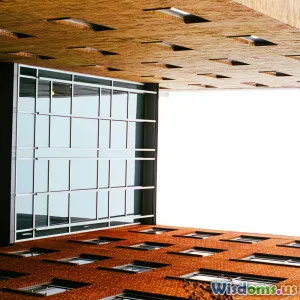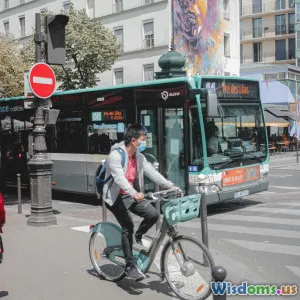
Public Spaces: The Key to Vibrant Cities
6 min read Explore how public spaces enhance urban life and community engagement, making cities more vibrant and livable. (0 Reviews)
Public Spaces: The Key to Vibrant Cities
In the heart of every thriving city lies a network of public spaces that serve as the backbone of community engagement and urban life. From bustling parks and lively plazas to serene waterfronts and interactive art installations, these areas are not just empty lots or park benches; they are essential components of urban design that enhance the quality of life for residents and visitors alike.
The Role of Public Spaces in Urban Design
Public spaces play a pivotal role in urban environments. They are places where people come together, share experiences, and cultivate a sense of belonging. According to the Project for Public Spaces, well-designed public areas can increase social interaction and improve community ties, leading to a greater sense of safety and well-being. The benefits of well-planned public spaces extend to various aspects of urban life, including:
1. Social Interaction
Public spaces act as communal hubs where individuals from different backgrounds converge. This interaction fosters tolerance and understanding, creating a social fabric that binds the community together. For example, the High Line in New York City has transformed an abandoned railway into a vibrant park, attracting millions of visitors who engage in recreational activities and cultural events.
2. Economic Vitality
Public spaces can significantly impact local economies. They draw foot traffic to surrounding businesses, creating opportunities for entrepreneurship and job creation. Studies have shown that areas with well-maintained public spaces experience higher property values and increased retail sales. The revitalization of Detroit’s downtown area, with its emphasis on public parks and plazas, has proven how critical these spaces are for economic resurgence.
3. Cultural Expression
Public spaces provide a canvas for cultural expression and artistic endeavors. They host performances, festivals, and art installations that reflect the community's identity. The Chicago Cultural Center, for instance, serves as both a public space and a cultural venue, showcasing local artists and promoting civic pride.
4. Environmental Benefits
Green public spaces contribute to urban sustainability by providing natural habitats, improving air quality, and reducing urban heat. Parks and green roofs can help mitigate the effects of climate change while enhancing biodiversity. Cities like Singapore have integrated nature into their urban design, creating a model for sustainable living that prioritizes green spaces.
5. Health and Well-being
Access to public spaces is crucial for physical and mental health. They offer opportunities for exercise, relaxation, and socialization, which are essential for overall well-being. The presence of parks has been linked to lower stress levels and improved mental health outcomes. A study published in the Journal of Environmental Psychology emphasizes that green spaces can reduce anxiety and enhance mood.
Designing Effective Public Spaces
To create vibrant public spaces, urban designers must consider several key factors:
- Inclusivity: Spaces should cater to all demographics, including children, the elderly, and people with disabilities. Features like accessible pathways, play areas, and seating options can enhance usability.
- Flexibility: Designing adaptable spaces that can host various activities allows for diverse programming, catering to different community needs.
- Safety: Well-lit areas, clear sightlines, and active street fronts contribute to the safety and security of public spaces, encouraging more people to use them.
- Aesthetic Appeal: Beautifully designed spaces can enhance the urban landscape, making cities more attractive and enjoyable for residents and tourists.
Conclusion
Public spaces are vital for creating vibrant, livable cities. They enrich urban life by fostering community interaction, boosting economic activity, supporting cultural expression, and promoting health and well-being. As urban areas continue to grow, it is imperative that city planners and architects prioritize the design and maintenance of public spaces. By doing so, they can cultivate environments where communities thrive, creativity flourishes, and citizens feel a true sense of belonging.
Rate the Post
User Reviews
Popular Posts





















